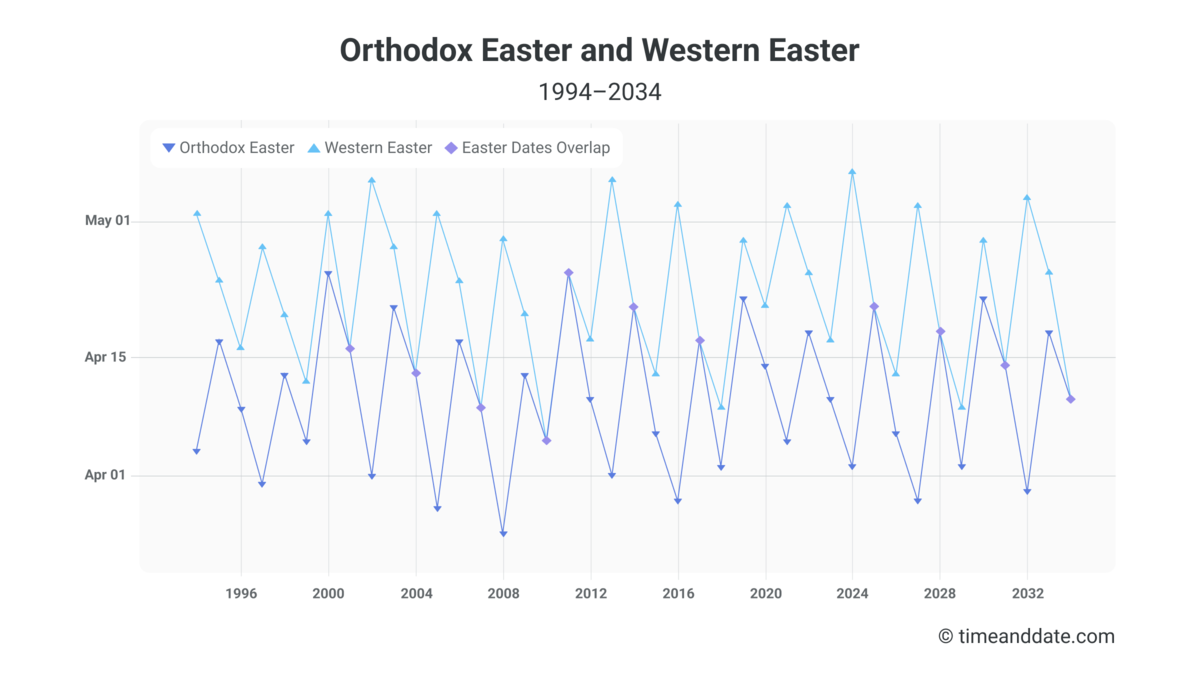 |
| A Method for Calculating Easter, 1456 AD |
Ecclesiastical vs. Astronomical Dates
According to the Council of Nicaea (325 AD), Easter/Pascha is celebrated on the Sunday which follows the first full moon after the Vernal Equinox.* Setting the date of this holy day would seem to be simple and straightforward. Nevertheless, the Eastern and Western churches don't base their calculations on actual astronomical events, which were difficult to calculate with precision in the fourth century. As an article on the website, Time and Date, points out:
►March 21 is the church's date of the vernal equinox, regardless of the time zone, while the actual date of the equinox varies between March 19 and March 22, and the date depends on the time zone.
►The date of the Paschal Full Moon, used to determine the date of Easter/Pascha, is based on mathematical approximations of the monthly lunar cycle, which follows a longer 19-year cycle called the Metonic cycle.
Approximating the Vernal Equinox
The ecclesiastical dates for the vernal equinox and the first full moon may coincide with the dates of their associated astronomical events, but in some years they don't. For example, based on astronomical dates alone, Easter/Pascha would fall on March 24 in 2019. But based on the ecclesiastical dates it was celebrated on April 21 by the Western churches and April 28 by the Orthodox Church.
Calendar Wars
Adding to the confusion, the Eastern and Western churches use different calendars to mark the date of the vernal equinox, which both churches designate as March 21.
►On our modern, Gregorian calendar, used by the Western churches, this date falls within 2 days of the astronomical event.
►But on the more ancient Julian calendar, March 21 occurs 12-15 days after the astronomical event. The Julian calendar, owing to its lack of precision, is currently 13 days behind the Gregorian calendar. So March 21 on the Julian calendar occurs on April 3. The earliest possible date for Pascha in the Orthodox Church is thus April 4.
►The continued use of the Julian calendar by the Orthodox Church is a source of constant friction between groups within the church, and largely accounts for the frequent discrepancy between the dates of Western and Eastern Easter/Pascha.
The Paschal Full Moon
The calculation of the Paschal Full Moon also hinges on the calendar, since the full moon and the date of Easter/Pascha must be after the Vernal Equinox. In the West, the Paschal Full Moon is within 1-2 days of the astronomical full moon. But under the Julian calendar, the Paschal Full Moon is 3-5 days after the astronomical event.
►This creates a complex interplay between the calendars, such that the difference between the Western and Eastern celebrations may vary from 0 days to 35 days!
►According to the Time and Date website (see graph, below), the dates coincide about 30% of the time. They are only 1 week apart 44% of the time. On the other end of the spectrum, they are four or five weeks off 26% of the time. This large discrepancy happens when the Gregorian Paschal Moon occurs before March 21 (the vernal equinox) on the Julian calendar, "causing the Orthodox date to jump ahead to the next Full Moon."
Who's Right?
The Nicene Council linked the date of Easter/Pascha to astronomical events rather than to a particular date on a calendar. Hampered by the mathematical and observational limitations of ancient astronomy, the church adopted a convenient and practical method for approximating the date. This method ensured that Easter/Pascha was celebrated by churches on the same day (though this was not always the case in the beginning due to different calculation methods).
Given the advances in astronomy since that time, this workaround is no longer necessary. Exact calculations based on the movement of celestial bodies can now be projected many decades into the future.
If the Eastern and Western churches are not ready to make this adjustment, the next best solution is the universal adoption of the Gregorian calendar. This calendar aligns much more closely with actual astronomical events than the Julian calendar. As that calendar continues to drift from the actual vernal equinox and full moon, the date of Orthodox Pascha will occur later in the year.
_________________________________________________________________________
* Appendix: The Date of Passover. According to the Eastern Orthodox Church, the Council's method for calculating the date of Pascha also entailed that the Resurrection cannot be celebrated before the Jewish Passover, since the crucifixion took place in conjunction with the Passover. On the other hand, it was also clear that the Council's intent was to completely separate the church from the lunar calendar used by the Jews. Thus in Western churches the date of Easter sometimes occurs before Passover. But this is never the case in the Eastern Church. As a result, there will still be occasional discrepancies in the date of Easter/Pascha even if the calendars are properly aligned and both churches continue their practice of approximating the date of the vernal equinox and the Paschal Full Moon. See the Orthodox Wiki discussion on the Zonaras Proviso. I avoided this issue in the article because it would have added another complex layer to the presentation.
























